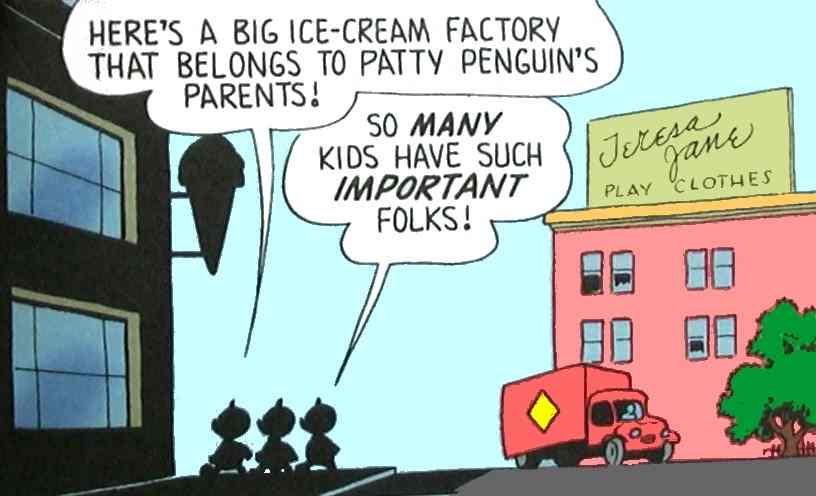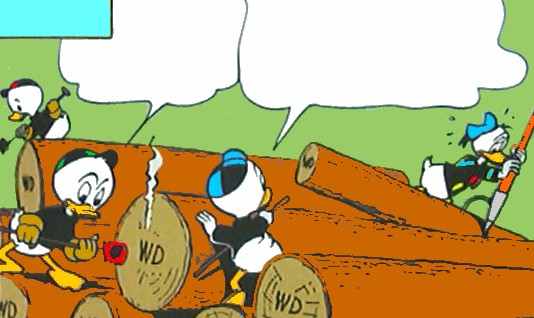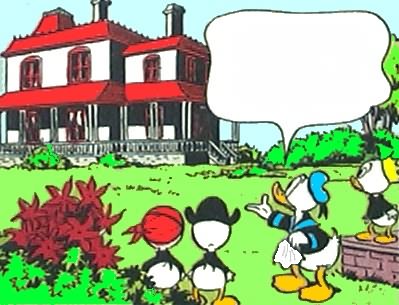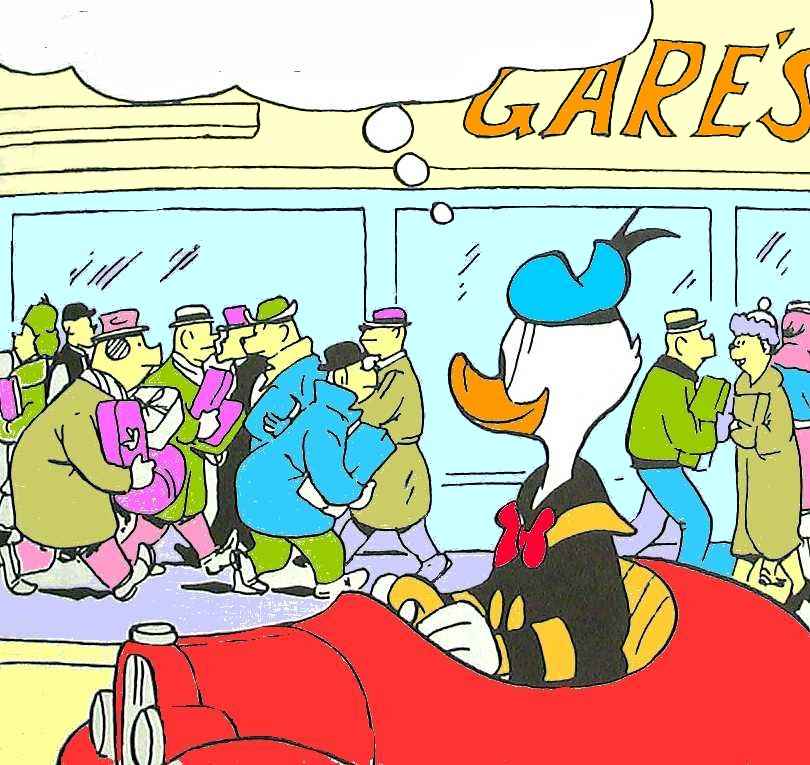

When you read Carl Barks' Disney duck stories you are not likely to recognize the familial ties hidden in several of them. No wonder, as you had no idea that they are there in the first place! But Barks used family members to work for him, and he occasionally used personal information as in-jokes when describing specific events. Below you are presented to some of these two groups of covert information.
INPUT |
|||
|
|||
|
|||
|
OUTPUT |
||
|
WDCS167 'The Salmon Contest' - 1954 The location - as seen here in Barks' very first half-page splash panel - was drawn from a real site named Puget Sound in Washington State where he occasionally visited daughter Peggy. |
WDCS192 'The Kingfisher' - 1956 During the 1950s Peggy's husband managed a salmon hatchery close to the aforementioned Puget Sound, and Barks made this story based on casual observations at the site. |
 WDCS210 'Donald the Baker' - 1958 Barks paid tribute to some of his grandchildren by mentioning them in the first panels of this story. Their first names are Bradley, Jackie, Patty, and Teresa Jane. |
|
Barks mentioned more of his grandchildren on an animal racing list. |
 WDCS267 The Log Jockey - 1962 Barks had several odd jobs before his artist career, one of which was as a lumberjack. |
 WDCS154 'Clubhouse for Sale' - 1953 The estate shown in this panel resembles Barks' childhood home in Oregon. |
|
WDCS238 The Dog Sitter -1960 In 1908, when the farm failed, Barks' father got a job at the new railroad station in the neighbouring town of Midland. He realized that there was a future in railroads, and both he and his boys were employed with the cattle transports feeding the livestock in the corrals before moving them down the line for slaughtering. |
WDCS190 'The Swimming Race' - 1956 In 1911 Barks' father took the whole family and moved from Carl's and Clyde's ancestral home in Oregon to Santa Rosa in California where they started working in a large plum orchard. Father Barks was convinced that they would strike it rich, but those years were the worst within memory of man for harvesting plums. |
WDCS178 'Noisy Neighbours' - 1955 Carl and Garé had firsthand knowledge of the annoyance of noisy neighbours, because they were living in a San Jacinto apartment house next-door to inconsiderate people at the time: At one side a couple played loud music, and upstairs an alcoholic woman was knocking empty bottles about every night. |
|
WDCS206 'Hotel Manager' - 1957 The potato sacks bear two names: Tulelake is the town in California where Barks' older brother Clyde lived as a hotel manager most of his life, and San Jacinto is the name of the area where Barks lived at the time of the story's publishing. |
WDCS312 Not-so-Ancient Mariner - 1966 In this story Tulelake pops up again, this time accompanied by Klamath, which is the Oregon county where Clyde and Carl were born. |
U$56 Mystery of the Ghost Town - 1964 During a car trip Carl and Garé drove by a hotel in Nevada which was said to be haunted by a girl and her newborn baby who had both been killed. Barks then dreamed up a story about a ghost infested hotel as graphically rendered in the story. |
|
Barks mentioned grandchildren Jackie and Pattie and - in an earlier panel from the same scene - Teresa as graffiti on the soda bar wall. |
WDCS133 'Playing Hooky' - 1951 Young Carl attended a typical one-classroom school in a small wooden building. The school seen here resembles the one that the youngster attended. |
 CP09 Christmas in Duckburg - 1958 Barks drew Garé's name on a department store's front. Notice that he omitted her name's diacritic acute probably in order not to clutter it with the apostrophe. |
http://www.cbarks.dk/THEFAMILIALSTORIES.htm |
Date 2014-03-07 |